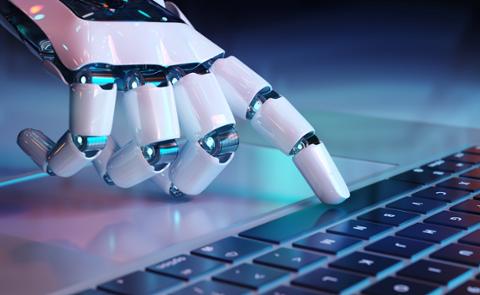Today’s work environment or workplace isn’t defined. The ‘new normal’ features disparate workforces and functions that do not occur simultaneously, with employees working remotely from different parts of the country or even the world.
For HR teams, this can be a major headache, as they must keep track and process paperwork in various places that may have different time zones and employment laws. In this environment, they also face the task of onboarding new team members, including the recording and cross-checking of personal information against company policy, local tax offices, and compliance.
McKinsey reports on eight recent shifts in the HR landscape revealing a growing trend adopting agile principles to ensure existing HR capacity can be swiftly reallocated to meet fast-changing business needs, while also delivering tailored services that address increasingly varied expectations of employees.
Additionally, with more companies offering cross-functional roles, there is also a growing need to move from process excellence to data excellence, using artificial intelligence and machine learning to make greater use of innovative decision making.
New Starter, First Impressions
As everyone knows, hiring new employees is both complex and imperfect as almost every decision made is based on personal judgment using sometimes only small amounts of data.
For employees to perform and feel happy in their jobs, they are now more than ever looking for organizations with meaningful roles, access to new technology and company values similar to their own. One of the first impressions a new employee gets about a company is how well it onboards team members.
Gallup data reveals that although every HR team goes to great lengths to streamline this process and make sure new employees feel welcome, only 12% of employees say they strongly agree that their organization does well with this task. Clearly there is still work to do.
How IA is Replacing High-Volume, Low Complexity HR Tasks
Intelligent automation (IA) is a combination of technologies, including business process management, robotic process automation, no-code development, artificial intelligence, and machine learning, that can help organizations deliver transformational results across the enterprise.
IA has the potential to reinvent how HR works, from clustering words and phrases; indexing personnel records with skillsets, to measuring total revenue and profit against job descriptions, or salary benchmarking against competitors. Now imagine how much data an average HR department maintains and the tremendous issues managing it. From current employees to past employees, every aspect of a person’s record must be securely stored in compliance with government and company policies.
This is an additional challenge for HR teams working in small organizations, not to mention large corporations with thousands of employees. Many organizations have sophisticated HR platforms to keep this data safely protected, but that doesn’t negate all the work HR teams must do to effectively manage it.
Empowering frontline HR teams with invaluable insights regarding employee growth, performance, engagement, and commitment means HR staff to focus on delivering a better employment experience.
How Digital Workers and IA are Transforming Data Management
Digital workers are software robots designed to take over the repeatable, mundane work that people really shouldn’t have to do. They can be programmed and trained to perform specific tasks, decisions and end-to-end processes, whether those are well defined, simple and repetitive, or complex, non-routine, unstructured.
Digital workers are the frontline to IA and can either work independently (‘unattended’) or hand-in-hand with your people (‘attended’). Amid ever increasing environmental and social governance, IA data management is also playing a greater role than ever in assisting HR managers.
Traditionally paper-based processes evaluated employee performance or training needs, and also meet regulatory requirements. Now automation power can take on most of these tasks, while also delivering cost savings and productivity gains — exponential growth and exceptional experiences — for customers and employees alike.
Digital workers can significantly reduce the manual work involved in updating and transferring data between systems, ensuring the stored data is clean and consistent from the day they’re hired to the day they retire. Based on market demands, by using automation to help organize, find patterns, or predict change, businesses are better able to deliver on their goals.
How Automation and People Analytics are Improving the Employee Experience
If you spoke with any HR manager 20 years ago and asked them what their primary people analytics were, they’d show you a spreadsheet focusing on headcount and attrition. Today, big data can be used to understand every aspect of the employee experience and its impact on workers, from work-life balance, fair pay to learning and development and diversity. When data is used to understand every part of the employee experience, intelligent, data-driven decisions can be made.
By using automation to collected information reflecting daily workplace realities as people interact with the organisation, positive employee engagement strategies can then be used on intranet portals, in performance meetings or with benefits teams to make improvements.
Armed with this information HR leaders can streamline business strategies and frameworks that put people at the forefront when discussing organization priorities that can drive real impact for workers. Taking something as simple as an employee listening survey and using IA to analyze results without bias, HR leaders can gain a better understanding of employee attitudes, then work with other areas of the business to improve the employee experience.
The Transformation of HR with IA
With this additional free time provided by digital workers, in future HR teams will become as strategic as finance functions with the power to review and deliver flexible, and motivated employees while remaining compliant.
By using IA across human resource functions to build diverse multi-regional talent pools, intelligent automation has the potential to better enable human capital teams to focus on the employee landscape. In fast-moving markets, IA can help HR leaders meet evolving business needs with tailored employment initiatives and goals based on real world data that meet ever increasingly varied expectations of employees.
Concetta Yates is VP Customer Strategy and Industry Solutions at SS&C Blue Prism.



